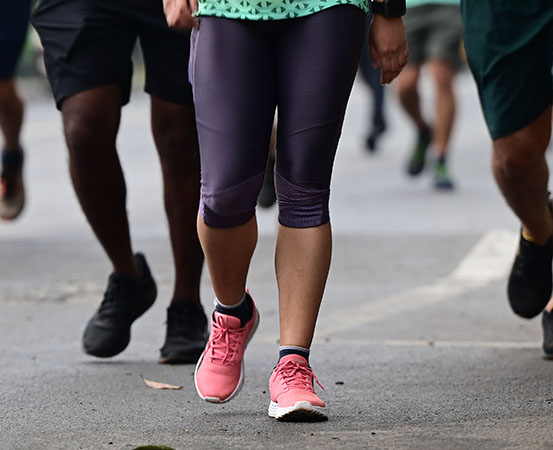
An ankle injury is usually caused by a minor mishap, be it slipping on a wet surface or missing a step on the stairs. While acute injuries, such as sprains or fractures, are caused by damage or trauma to the joint, chronic ones stem from insufficient healing or recurring acute injuries that persist for more than six weeks. Chronic ankle instability can also lead to frequent episodes of the joint giving way or rolling, leading to an increased risk of falls and injuries and limiting participation in certain physical activities. The condition can also interfere and hamper daily life in many ways.
Frequent instances of ankle injuries weaken the ligaments in the ankle joint, making it difficult to provide adequate stability and support. This leads to chronic ankle instability.
Mechanical and functional ankle instability
Chronic ankle instability is classified as mechanical ankle instability and functional ankle instability.
“Mechanical ankle instability is induced by ligament laxity. Here, the ligaments are extremely loose or flexible, potentially leading to instability,” says Dr Sidharth Unnithan, a sports medicine consultant from Kochi, Kerala. Several factors including natural disposition, hormonal changes during pregnancy and repetitive stress can cause this condition.
Dr Unnithan adds, “On the other hand, functional ankle instability occurs due to factors such as muscle weakness, balance deficits, posture control deficits and neuromuscular deficits.”
How to prevent chronic ankle instability?
According to Dr Unnithan, athletes are more likely to encounter chronic ankle instability because of recurrent injuries, inadequate rehabilitation and insufficient time for complete ligament healing.
Complete rehabilitation, use of appropriate footwear and proper training to strengthen the ankle joint are preventive measures. These will lower the risk of injuries and help prevent chronic ankle instability.
Proper training: Ankle injuries that may later result in ankle instability are primarily caused by sudden changes in foot direction. A practical way to avoid any harm is to train for such sudden movement.
One method that experts suggest for this is BOSU ball training. “By increasing ankle proprioception and improving overall joint stability, the BOSU ball [hemispherical training ball] ankle exercise trains your ankles to adapt to sudden changes in direction. It can be done by using one leg to balance on a BOSU ball,” says Dr Unnithan.
Another crucial part of the training is strengthening the muscles surrounding the foot and ankle. “Incorporating strength training programs into your routine strengthens the muscles and minimizes injuries,” adds Dr Unnithan.
Choosing the right footwear: Certain shoes are designed specifically to meet the requirements of a particular sport. For example, they can have ankle guards to prevent twisting or spraining of the joints.
Adequate rehabilitation: One of the most common mistakes made by athletes is failing to go through appropriate rehabilitation after an injury. Dr Unnithan elaborates, “After resting for a day or two, the swelling subsides and they resume playing. This is when they might encounter another injury, which turns into a chronic injury. Getting adequate rehabilitation immediately after an acute injury can significantly reduce your chance of developing a chronic injury.”
Treatment for chronic ankle instability
The typical treatment procedure for chronic ankle instability starts with conservative measures comprising physiotherapy, proprioceptive training and ankle-strengthening exercises to work on improving stability and addressing muscular imbalances.
“The level of instability can sometimes be made worse by pronation [downward/inward movement] or supination [upward rotation]. In such instances, we recommend using an ankle brace or ankle cap to help stabilize the ankle by providing external support and limiting excessive ankle mobility,” says Dr Unnithan.
While most ankle instability cases are treated conservatively, doctors recommend surgery if there is a complete tear of the ligament. Dr Unninthan shares, “Mostly, injuries occur to the parts of the lateral ligament in the ankle joint — the anterior talofibular ligament (ATFL), posterior talofibular ligament (PTFL), or calcaneofibular ligament (CFL). It can be surgically fixed, which enables athletes to undergo rehab quickly, allowing them to get back to their sport sooner.”
Takeaways
- Repeated ankle injuries weaken the ligaments in the ankle joint, which hinders the joint’s capacity to offer enough stability and support. This results in chronic ankle instability.
- There are two types of chronic ankle instability: functional and mechanical. While the former is caused by issues like muscle weakness, balance issues, poor posture control and neuromuscular deficits, the latter is caused by ligament laxity.
- Athletes frequently experience chronic ankle instability, which can be avoided with appropriate training, suitable footwear choices and timely rehabilitation following acute injuries.

















